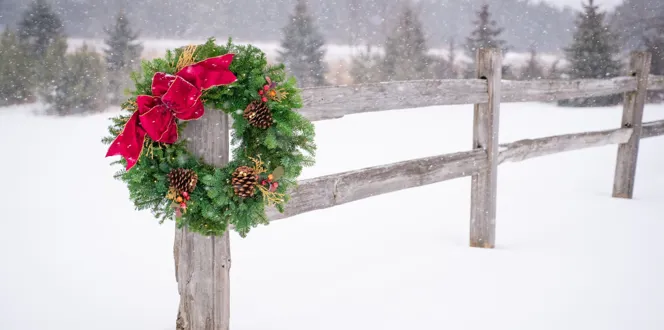That warm feeling you get from planting a new tree or shrub might have you ready to add one to your yard in winter.
But just like there’s a right way to plant trees, there’s a right time to plant, too. In some cases, wintertime is right on target, but other times, planting in winter will hurt your tree in the long run.
Here’s how to tell if it’s OK to plant in winter or if you should wait for a more suitable season.
What You Need to Know About Planting Shrubs, Evergreens, and Bare Root Trees in Frosty, Winter Weather
Young plant roots need a warm and well-watered environment to establish themselves, which is why frosty soil and fresh new roots don’t mix. With frozen ground, tree roots can’t get the water they need to get off to a good start.
That being said, if you live in an area free of freezing winters, or your area’s having a seasonably warm winter, you might be able to plant in wintertime.
Are there any trees you can plant in winter?
The only trees you should totally avoid planting in winter are evergreens. Unlike deciduous trees and shrubs, evergreens hold on to their foliage in wintertime, and it'd be really hard for them to establish their roots and preserve their needles’ moisture levels with a limited water supply in winter.
Other tree types are usually fair game, but only if the ground isn’t frozen and won’t freeze for at least four to six weeks after planting.
That’s why if you live somewhere like Alabama, Georgia, Tennessee, or any place the ground doesn’t freeze, winter planting is not just OK, it’s encouraged! In these climates, planting in winter gives new trees the time they need to establish roots before hot, drought-like weather kicks in.
If you’re looking for a little more guidance, here’s a breakdown of the best time to plant trees based on where you live and what you’re planting. You can always check with your state or provincial extension service for planting recommendations as well.
How can I plant trees or shrubs in winter the right way?
As you’ve read a few times now, the key to setting a new tree up for success in winter is planting when the ground is cool but not frozen. Not sure how to gauge the ground temperature? Use a soil thermometer! Insert the thermometer down into the soil for a few days in a row. If the soil consistently measures 50° F or higher, it’s safe to plant your deciduous tree or shrub. But, if the soil test proves the ground is too cold, plan to plant during the upcoming spring or fall seasons instead.
What should I do after planting bare root trees or shrubs in winter?
Welcome your new plant with a moisture-conserving layer of mulch, and water the plant weekly all the way up until the ground freezes.





